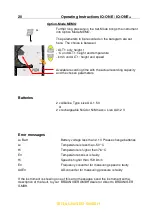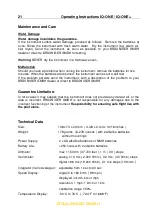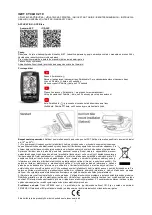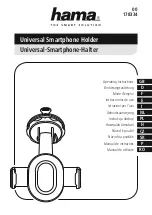
6 Operating Instructions IQ-ONE / IQ-ONE+
Bräuniger GmbH
The Altimeter
General
How does an altimeter function?
An altimeter is really a barograph because it doesn’t directly measure height, but air
pressure. Height is calculated from changes in air pressure. The pressure at sea level is
used as zero height for the calculation of real height (after the international height
formula).
Why does pressure change with height? Pressure at any given point on the earth is
created by the weight of air in the atmosphere above it. Therefore, pressure reduces
with height – there is less air above you. A change in pressure of one millibar (mb) at
500 metres above sea level is a height difference of about 8 metres.
In practice, it is not as simple as that because of the many other factors that influence air
pressure. On a stable day, temperature induced differences of 1mb mean a height
difference of +/-10 metres. Depending on the weather, air pressure at sea level (QNH)
may vary from 950 mb to 1050 mb. In order to eliminate the influence of the weather, the
altimeter has to be calibrated at certain intervals. This means the altimeter has to be set
to a known height and show this height.
During rapid weather changes e.g. the passage of a cold front, the air pressure can
change by 5 mb during a day. This means a height difference of 40 metres!
Another way to calibrate an altimeter is to set it to QNH.
What is QNH? General air traffic needs a common zero point. This means that at a
certain height all aircraft show the same height on the altimeter. The reference point for
this is QNH. The QNH is the actual pressure calculated back to sea level (1hPa=1mb).
It is calculated several times a day and can be taken from the weather forecast for
aviation or it may be requested from airfields.








































